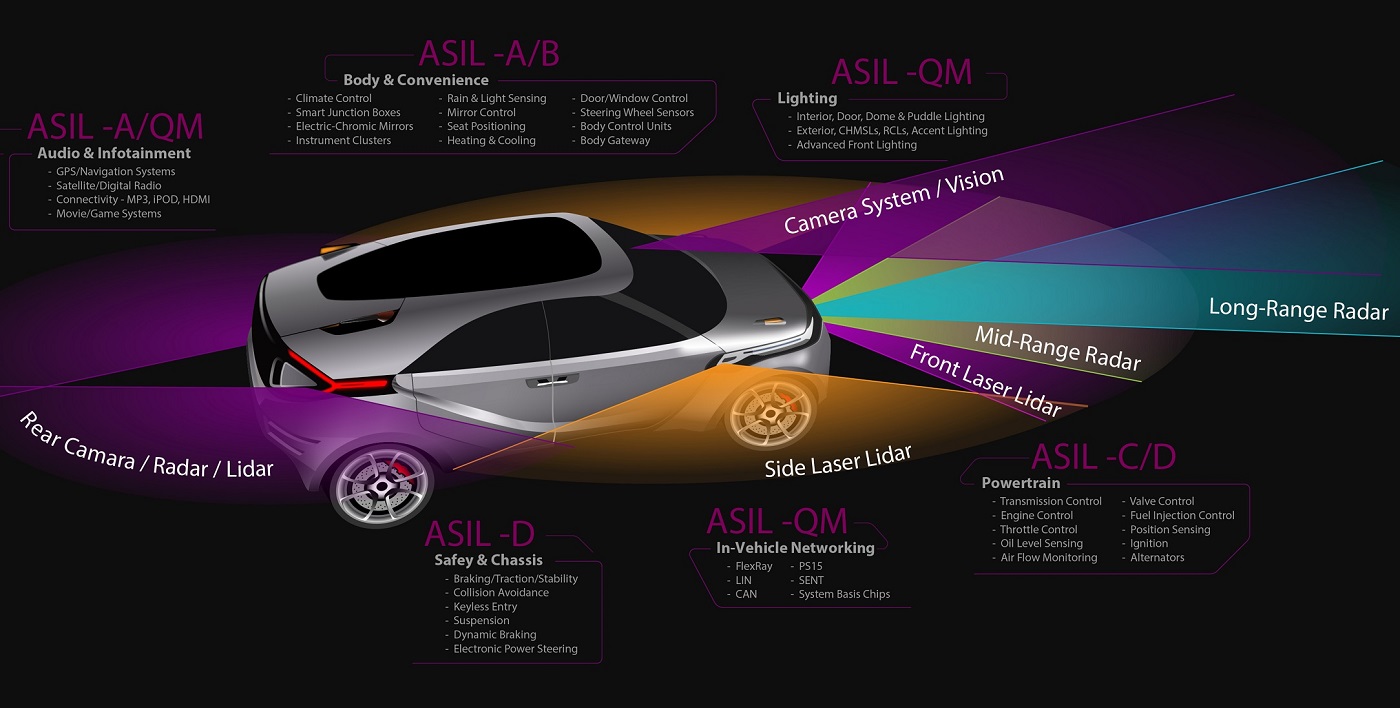| Level |
0 (No Automation) |
1 (Driver Assistance) |
2 (Semi-Automated) |
3 (Conditional Automation) |
4 (High Automation) |
5 (Full Automation) |
| Explanation |
The driver is entirely responsible for the vehicle’s safety on the road. |
Adaptive cruise control (ACC) is an example of Level 1 automation. The system only takes control when the driver invokes its function. |
This level of automation often uses several assistance systems to enable partial vehicle autonomy in set circumstances. An example would be automatic parking. |
This level of automation allows the driver to disengage (to an extent) from the driving process. The vehicle handles all aspects, including steering, braking, and acceleration, considered the first step in driving autonomy. An example would be a traffic jam pilot. |
This level of automation still requires a driver to be at the wheel so that they can resume control if environmental reasons dictate. An example would be fully autonomous driving. |
At this level, there are no driving controls; hence the vehicle does not need a driver. |
ADAS trends
The inclusion of forward-facing LiDAR, radar, and video sensors by default in modern vehicle design allows several ADAS system elements to exploit them as required. The evolution of ADAS systems has accelerated as a result.
An advanced emergency braking system is a collision avoidance system that can alert the driver and, if necessary, apply the brakes automatically if it anticipates a collision. The system is an enhancement of AEB. Only cars fitted with AEBs will achieve the Euro five-star new car assessment programme (NCAP) safety rating in the future.
Emergency lane-keeping systems (ELK) help drivers orient their vehicles safely within the lane or road borders. The system intervenes more aggressively than previous lane keep assistance (LKA) incarnations, which used haptic responses (vibrations) and audible warnings to alert the driver of an unexpected lane change. In addition to the warnings provided by LKA, the ELK system will steer the vehicle back into its former trajectory.
Intelligent speed assistance (ISA) systems use a combination of video camera data to recognise speed restriction signs, and speed limit advice data, linked to GPS systems. The ISA can warn the driver and reduce speed if the vehicle exceeds the limit.
Drowsiness and attention warning systems (DDAW) monitor the vehicle’s behaviour to ascertain whether a driver’s concentration levels are diminishing. Lane slip or sudden steering wheel movements are two examples. Some systems can monitor the journey duration and use in-car sensors to monitor the driver’s facial expression, head angle, and grip on the steering wheel. The system can alert signs of potential driver drowsiness with an audible warning and recommend a break.
In the instance of a collision (event), i.e. when the vehicle exceeds pre-defined thresholds for deceleration, event data recorders (EDR) store nine mandatory elements of data pertaining to the vehicle’s speed, throttle position, brake deployment, and if the seatbelts were secured. The data is stored within the airbag control module (ACM). The data can be retrieved and used by vehicle agencies to assist in their investigations.
Conclusion
As our roads become more crowded, the consequences of even a momentary distraction can be devastating. There is compelling evidence to support ADAS reducing injuries and deaths.

